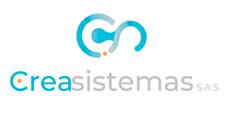It can also organize and pay bills for you, as well as collect payments and follow up on outstanding invoices. The main benefit of charging a client in milestone payments is that you don’t need to wait until you fully complete the job to get paid. Indirect costs are those which are essential to running your business across projects.
Self-Employment Taxes
It helps in making informed decisions about future investments and understanding project profitability. Construction projects involve varied costs – labor, materials, machinery, subcontractors, and more. Categorizing these ensures that you can track and manage your expenses better. Unlike cash accounting, accrual accounting methods like PCM better reflect the economic reality of long-term projects since accrual-based reporting matches revenues with related expenses. Under the completed contract method (CCM), contract income and expenses aren’t reported until the project finishes.
Is construction accounting software secure?
- Proper bookkeeping ensures transparency, improves financial management, and enables contracting companies to gauge the health of their operations.
- The decentralized nature of the industry makes construction bookkeeping so unique.
- This software is best for contractors who have multiple projects happening simultaneously.
- When accounting for job costs, keeping track of the different expenses by project is essential.
To stay on top of cash flow and keep your books in check, you will need a flexible yet organized construction accounting system. Accounting is an essential part of running a successful construction business. However, managing your business finances correctly doesn’t always come naturally—especially if you’re not much of a numbers person. What’s more, accounting for construction company finances has some unique challenges compared to other types of businesses.
Record Day-to-Day Financial Transactions
Apart from multiple prevailing wage and union rates, contractors commonly deal with multiple rates for numerous other reasons. Working on jobsites in multiple cities and states, employees may have multiple tax withholdings, all within a single payroll. As a contractor, you more than anyone, know the importance of having the right specialist for the right job. You wouldn’t have a carpenter rewire your house and you wouldn’t have a painter fix your plumbing.
- If you manage many projects at once, strong retainage management is essential.
- No matter your trade, financial and accounting education is vital to ensuring your construction business stays healthy and profitable.
- The simplest way to account for retainage is to include two sets of information on your invoices.
- Finally, you want to find a solution that you can customize if you have special reporting or processing needs.
- Under the financial management segment, you can make intercompany entries and manage workflows and content management.
The Davis-Bacon Act (DBA) is a United States law that requires employers to pay prevailing wages—the regional minimum pay requirement—on public works projects for laborers and mechanics. Construction payroll wages can vary greatly depending on the location of the job, the size of the job, and the individual skill level of the employee. Common construction payroll wages range from minimum wage in some areas to more than $50 per hour for experienced workers such as carpenters or electricians. Now that you know how company accounting is different, let’s get into the nitty-gritty of accounting for contractors.
Accounting for construction: 5 tips & best practices
To ensure you aren’t surprised by a customer withholding part of the fee you’re owed, make sure you account for contract retainage properly when budgeting for a project and invoicing clients. You could have one account reserved for paying expenses, another one for managing payroll, and a third one for receiving payments for clients. If you manage many projects at once, strong retainage How Construction Bookkeeping Services Can Streamline Your Projects management is essential. It will ensure you have capital in the event that a customer withholds money owed.
Of course, that doesn’t mean there aren’t expenses during construction or that contractors can’t bill in the meantime. Revenue is recognized when cash is collected and expensed when cash is spent. The difference between cash in and cash out will determine your income or losses. This means that there are no accounts payable or accounts receivable as a transaction does not exist if money didn’t physically change hands under cash accounting.

